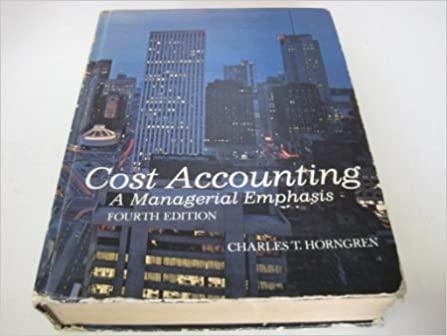Approaches to Allocation A computer service department of a large university serves two major users, the School
Question:
Approaches to Allocation A computer service department of a large university serves two major users, the School of Engineering and the School of Humanities and Sciences (H&S).
When the computer equipment was initially installed, the procedure for cost allocation was straightforward. The actual monthly costs were compiled and were divided between the two schools on the basis of the time used by each.
In October the costs were $100,000. H&S used 100 hours and Engineering used 100 hours. How much cost would be reallocated to each school? Suppose that costs were $110,000 because of various inefficiencies in the operation of the computer department. How much cost would be reallocated? Does such reallocation seem justified? If not, what improvement would you suggest? Use the same approach as in part 1. The actual cost behavior pattern of the computer department was $80,000 per month plus $100 per hour used. In November, H&S used 50 hours and Engineering used 100 hours. How much cost would be reallocated to each school?
- As the computer service department developed, the size and composition of the equipment was affected by a committee that included representatives of H&S and Engineering. They agreed that planning should be based on long- run average utilization of 180 hours monthly by H&S and 120 hours monthly by Engineering. In part 2, suppose fixed costs are reallocated via a predeter- mined monthly lump-sum based on long-run average utilization; variable costs are reallocated via a predetermined standard unit rate per hour. How much cost would be reallocated to each school? What are the advantages of this method over other methods?
- What are the likely behavioral effects of lump-sum allocations of fixed costs?
For example, if you were the representative of H&S on the facility planning committee, what would your biases be in predicting long-run usage? How would top management counteract the bias?
lop2
Step by Step Answer:






